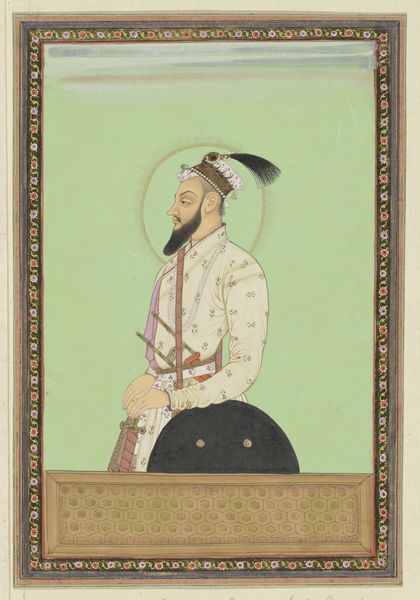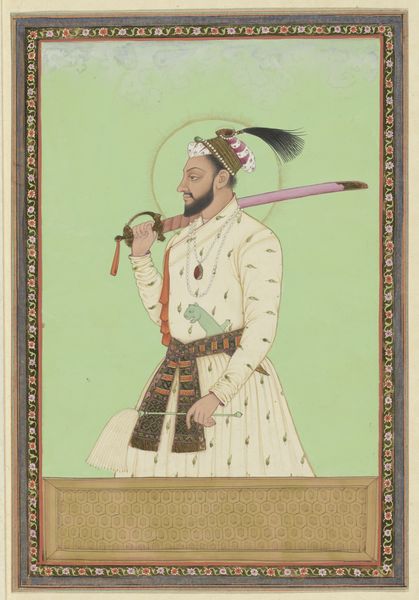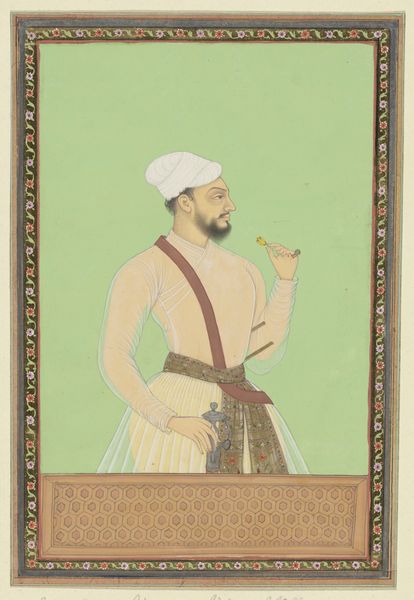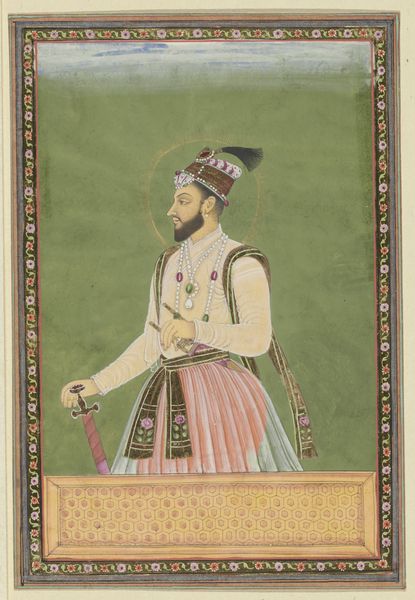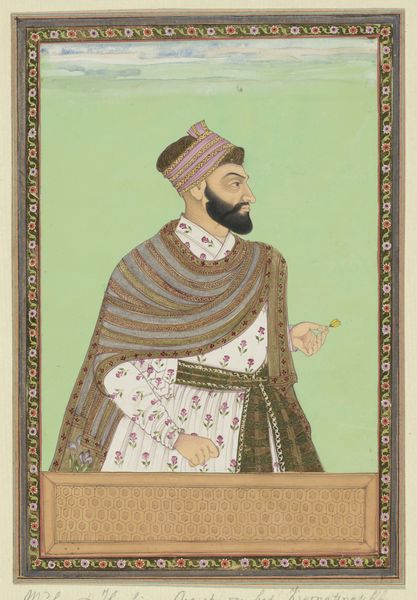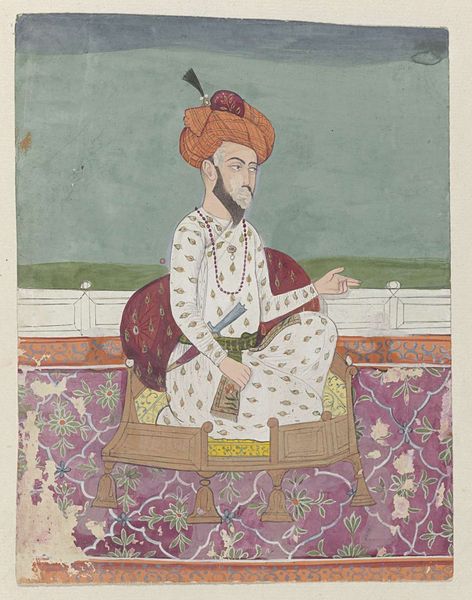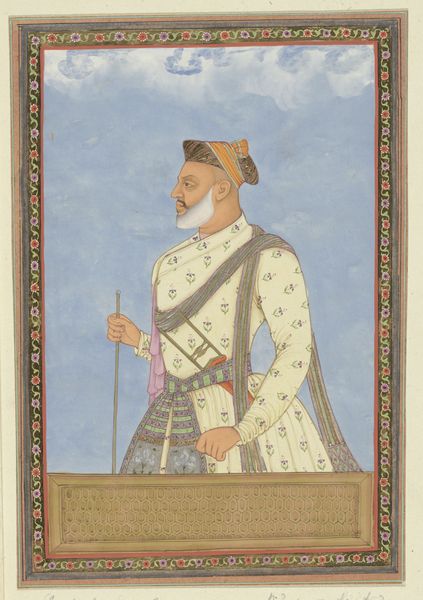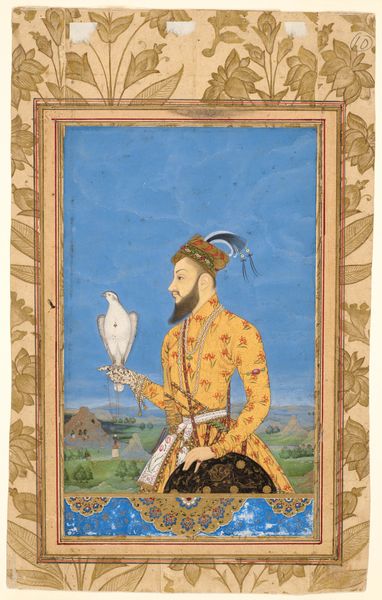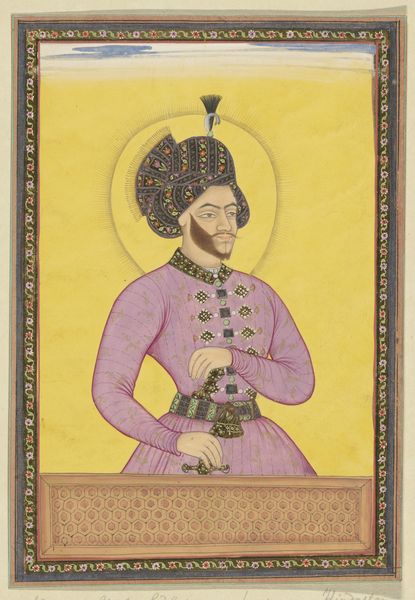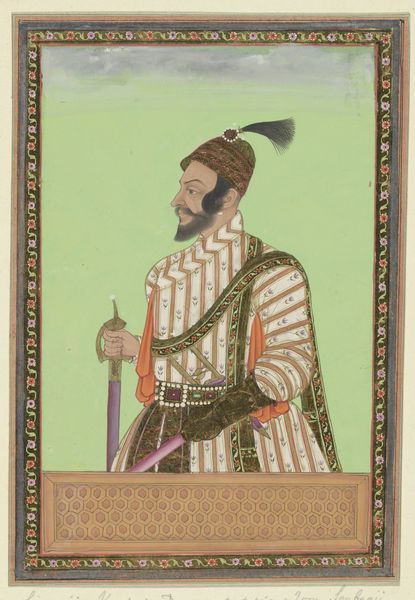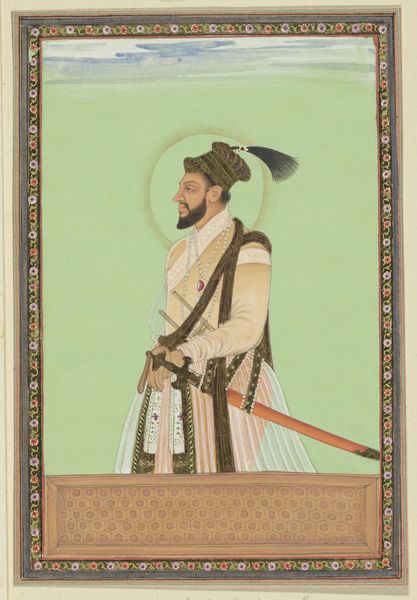
painting, watercolor
#
portrait
#
water colours
#
painting
#
caricature
#
watercolor
#
orientalism
#
islamic-art
#
miniature
#
watercolor
Dimensions: height 203 mm, width 140 mm
Copyright: Rijks Museum: Open Domain
This watercolor painting portrays Saf-shikan Khan, a vizier of Aurangzeb, and was created anonymously in India. The image creates meaning through its detailed depiction of the subject's clothing, jewelry, and weaponry, all visual codes of power and status. The artist includes cultural references, such as the subject's turban and beard, to convey his identity as a Muslim nobleman in the Mughal Empire. The painting reflects the social structures of its time, depicting a member of the ruling elite in a position of authority. It likely served to legitimize and reinforce the existing social order. To gain a deeper understanding of this painting, we might explore the history of the Mughal Empire, the role of viziers in its government, and the artistic conventions of portraiture in that era. By understanding the social and institutional context in which this painting was made, we can gain a deeper appreciation for its meaning and significance.
Comments
No comments
Be the first to comment and join the conversation on the ultimate creative platform.
